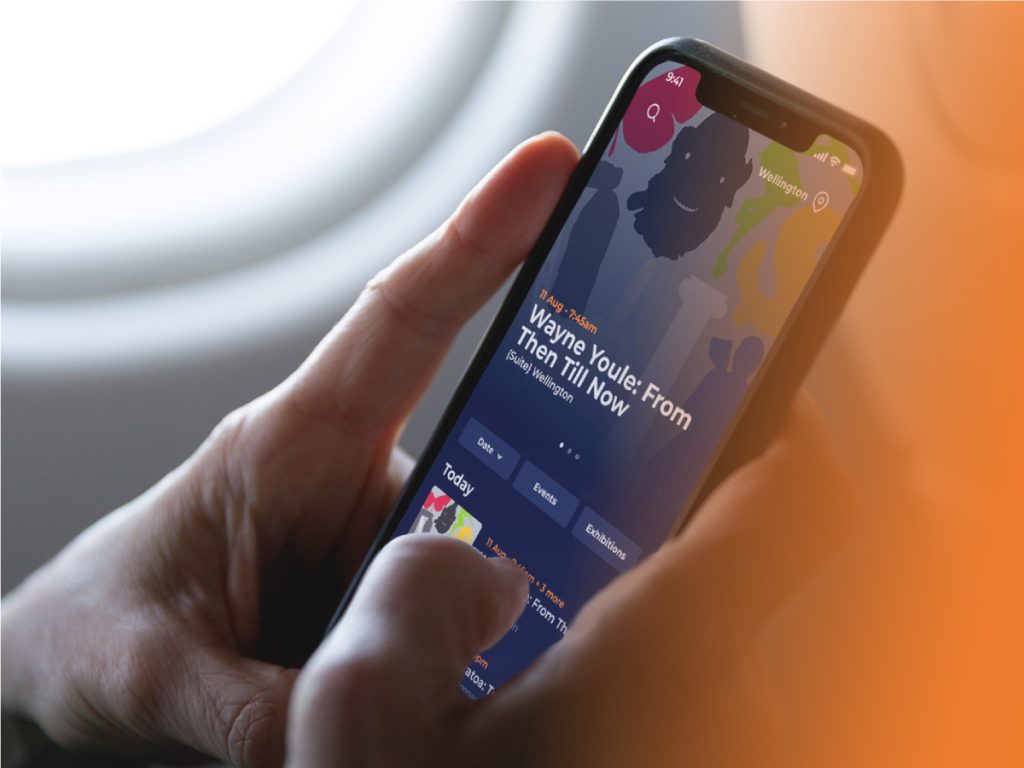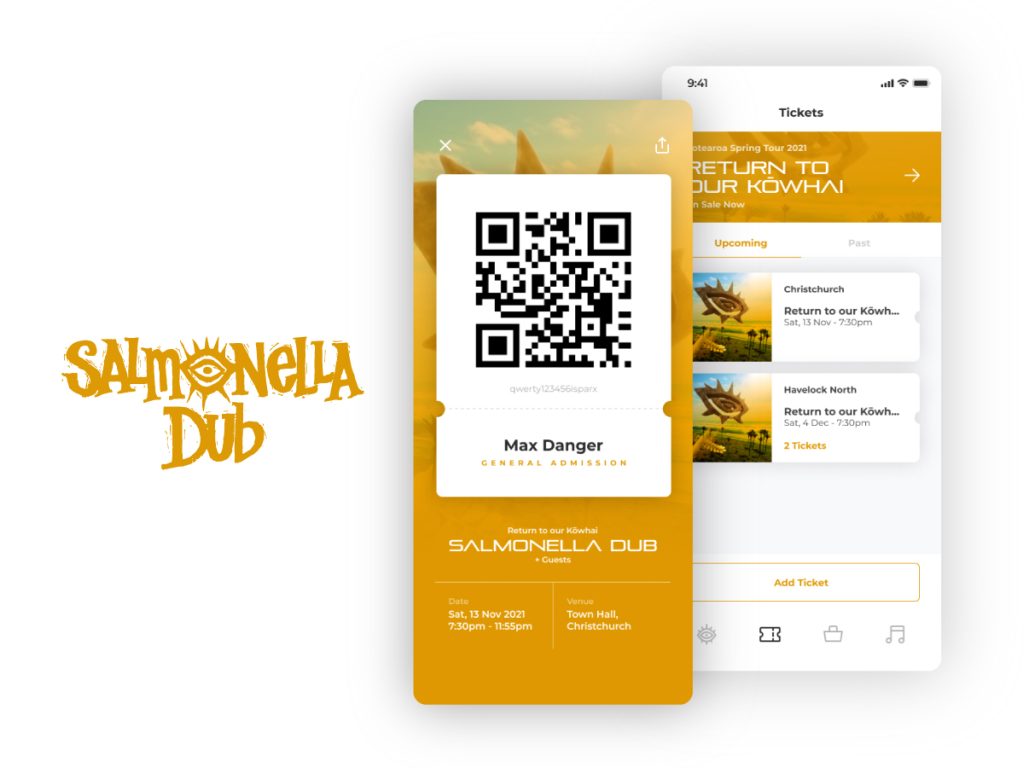From The Edges – Toi Ārahitanga, The Art Guide
In our From The Edges series we feature Aotearoa NZ Academic Design Projects. Our practice as designers can be seen to be explored, pushed and perhaps become something entirely new where it exists at the edges of our practice in the world of academia. Free from the constraints of commercial outcomes and clients, designers explore and challenge existing paradigms.
In this article, we talk with Joff Rae and Walter Langelaar about the Toi Ārahitanga, The Art Guide – a developed concept of disruptive Kaupapa Māori Innovation – new media & technology for events, performance & art.

Can you tell us about the brief/kaupapa of the project, how did the idea for Toi Ārahitanga come about?
While developing protocol & process for 3D capture & digitisation of Taonga, we realised that a major issue for the technology was uptake. We looked at Arts & Culture as a driver of immersive technologies, especially since most of the content creation for these platforms actually comes from this sector itself. So it makes sense for that same sector to then also pioneer the underlying technological innovation, rather than having our content creators working across different fields to seek out similarly innovative opportunities.
Toi Ārahitanga – the art guide – is a practical & scalable plan to introduce immersive media including AR/XR, location-based media and 3D/360°/photogrammetry to cultural audiences. With our iNVITE™ ticketing and transactions system we are exploring potential of 5G, blockchain & NFTs in very practical and commercial terms.
Did Toi Arahitanga initially start out as a way to develop disruptive Kaupapa Māori Innovation? If so, how did this approach affect the project timeline and trajectory?
Yes, Toi Ārahitanga was a response to the need to demonstrate the usefulness & value of immersive technologies, especially in the wider context of indigenous cultural artefacts and Māori Data Sovereignty.
There is a certain level of disruption necessary in order to be able to work with new technologies that may innovate in any given field, however the disruption in our case is also visible in the types and caliber of artists we prefer to work with.
As a result, timelines and trajectories for technical development often have to go hand in hand with the project roadmaps and calendars of our artists, which in turn again are contingent on external stakeholders such as clients and funding bodies.

How did Victoria University get involved with this project?
Joff and Walter first met in the remnants of an exhibition that was part of the MoneyLab #12 conference, which Walter organised earlier in June as part of his current research. The exhibition was set up as the first (physical) blockchain/NFT art gallery in Aotearoa NZ, and after some discussion of current and ongoing projects, the synergies started to emerge.
Several members of the indigi.nz™ & iSPARX™ team are alumni of Victoria’s School of Design Inovation, where Walter is a senior academic in the Media Design department, and so the idea for setting up the Summer Research Scholarships was born.
How or what parts of the project are the students involved in?
The students will be developing specific technical integrations for the Toi Ārahitanga app that involve the use of NFTs and other types of blockchains assets as a means for interacting with digital cultural artefacts, and the events they are shown in – whether they be digital, physical, or some kind of hybrid.
Again using the concept of ‘digital Taonga’ as a base, together with the students and a team of advisors we are researching and developing the potential for blockchain technology and adjacent cultural formats – such as Distributed Autonomous Organisation (DAO) – as practical/actionable applications for the Arts & Culture sector.

How might a typical art gallery or museum use this app? For example, what might some of the AR, 360° and 3D media applications for them look like?
We’re developing indigi.nz™ templates for galleries & museums to present AR/XR, 3D & 360° digital assets, mostly going from three base-formats which include a 3D/virtual gallery to showcase work (browsing functionality); site and location-specific displays of AR/XR content (experience design); and streaming media for live/real-time delivery for public events.
Different versions of these templates have already been published through, for example, our collaborations with Discover Porirua, the Salmonella Dub app, and the Ruatoki project with Tame Iti.
Further projects are currently underway with Enjoy Gallery, Pātaka Art + Museum, and the Pacific Sisters collective.

Are the streaming and virtual exhibitions capabilities all going to be done from within the app, or will there need to be extra equipment?
The app is powered by the iSPARX™ system – a modular system that involves a web CMS interface, a cloud database with abovementioned templated mobile app and website. At this stage we’re implementing finishing touches on the mobile app with several partners, and are looking at a launch date of 11 November – so watch this space.
A key driver for the app and other functionalities are to be based around mobile device delivery, without the need for extra/external hardware such as headsets or gaming/VR computers.

It says on the Indigi website “leveraging the latest developments in blockchain infrastructures and NFTs” – can you tell us a bit more about how you see blockchain infrastructures and NFTs affecting the design and arts fields in the future?
Blockchain & NFT’s will soon be applied to digital assets & interaction design for many industries, NFTs in particular mostly as a technical metaphor for various types of transactions that may occur across the different layers of our application(s).
In the Art & Culture sector and creative industries we’re looking at authentication of digital Taonga, again taking an Indigenous Design-led lens to issues that surround the technology, such as governance/regulation and sustainability.
The Summer Scholars description says “Students will research and develop interactive 3D assets including Taonga, with the intention of authenticating and publishing Taonga on the blockchain.” – can you tell us a bit more about how you envision this part of the project? What sort of interactive 3D assets or Taonga do you imagine being created?
Authentication of digital Taonga & how we approach capture, storage & distribution is a primary consideration in this kaupapa, with the Taonga in question primarily involving new forms of cultural expression – from and by contemporary artists – rather than focusing on ‘historical’ objects.
NFTs and blockchain more generally are a good representation of how we move with technology that helps us instrumentalise the ‘artefacts of the future’ – for example through blockchain’s inherent capabilities focused on information security and decentralisation of governance, which in turn is essential to our mahi through this kaupapa.

A methodological framework for ‘Indigenous IT Artefacts’ is also mentioned, can you give us some more insight into this framework?
The methodological framework is loosely based off of previous and ongoing projects by friends and colleagues, most specifically the excellent work by Kevin Shedlock in the (Te Herenga Waka VUW) School of Engineering and Computer Science, as well as the recently bootstrapped Veracity Lab led by Markus Luczak-Roesch in the School of Information Management.
At the base of the framework lies a desire to align technical processes with cultural protocol, and we’re working with a stretch goal that could be described as an ‘indigenous blockchain’, place where Iwi & Hapu can store their own digital Taonga, however we’re also aware of and connected to some very awesome other initiatives and projects working in similar areas – both locally and internationally.
Find more information, have a look at some of the projects:
- https://indigi.nz/artguide
- https://isparx.group/arahitanga




